The Best of Pema Chödrön: Life, Quotes, and Books
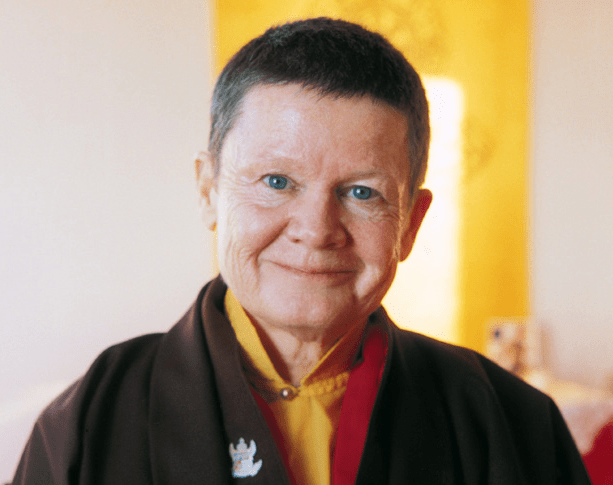
Photo by Liza Matthews.
Like all explorers, we are drawn to discover what’s out there without knowing yet if we have the courage to face it.
-Pema Chödrön
One of the most beloved of American Buddhist teachers, Pema Chödrön has devoted her life to inspiring people to awaken and has changed many lives in the process. She is the author of many influential books, such as When Things Fall Apart, Living Beautifully, and The Places that Scare You. Her writing, which explores Buddhist concepts and offers paths to conquering subjects such as suffering, fear, and difficult times, has inspired people worldwide. Lion’s Roar has published many powerful teachings authored by Pema. Read below for some of our favorites and to learn about her life and work.
![]()
The Life of Pema Chödrön
EARLY ON
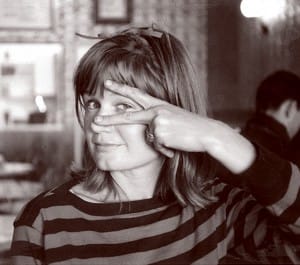
Deirdre Blomfield-Brown (now Pema Chödrön) in Berkeley, mid-1960s. Photo courtesy of Arlyn Bull.
The Pema Chödrön we know today is often referred to as a “bodhisattva warrior,” but previously led a rather regular life. Pema was born Deirdre Blomfield-Brown in New York City in 1936. After what she describes as a pleasant, Catholic childhood, Pema married at the age of 21, went on to study at the University of California at Berkeley, and became an elementary school teacher. She had two children with her first husband, but divorced in her mid-twenties and remarried years later. Her second marriage came to an end when her husband revealed he was having an affair and wanted a divorce.
FINDING BUDDHISM
Pema came to explore her spirituality as an attempt to cope with the emotional trauma of her failed marriages. She cites the moment her husband revealed his affair to her as a genuine spiritual experience — a moment where time truly stood still. To cope with her pain, Pema sought various forms of therapy, tried living in an ashram, and even participated in weekend intensives in Scientology, but in the end, none of it worked. It took a year filled with fear, rage and what Pema describes as general “groundlessness” for her to begin piecing her life back together.
Her true awakening began when she came across Buddhist concepts while reading an article by the man who would become her most influential teacher, Chögyam Trungpa Rinpoche. Sparked by an interest in his Buddhist teachings, Pema went on to study with Lama Chime Rinpoche on frequent trips to London. His Holiness the Sixteenth Karmapa ordained Pema as a novice nun in England in 1974.
Pema first met Chögyam Trungpa Rinpoche in 1972 and began studying with him two years later. In 1981, Pema received full monastic ordination in Hong Kong at the request of the Sixteenth Karmapa, making her the first American in the Vajrayana tradition to become a fully ordained nun. She continued to study under Chögyam Trungpa Rinpoche until his death in 1987.
PEMA CHÖDRÖN TODAY
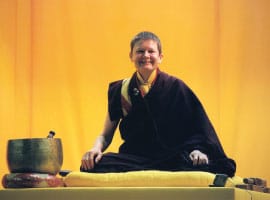 Pema served as the director of the Boulder Shambhala Center, Karma Dzong, for some time and eventually moved to Cape Breton, Nova Scotia in 1984, where she remains to this day as the spiritual director of Gampo Abbey monastery. Pema credits Gampo Abbey as being the place where she truly let go of fear and ego. She continues to help establish the monastic tradition in the West, teaching in Canada and the United States.
Pema served as the director of the Boulder Shambhala Center, Karma Dzong, for some time and eventually moved to Cape Breton, Nova Scotia in 1984, where she remains to this day as the spiritual director of Gampo Abbey monastery. Pema credits Gampo Abbey as being the place where she truly let go of fear and ego. She continues to help establish the monastic tradition in the West, teaching in Canada and the United States.
In 2008, Pema was featured in an interview conducted by fan Oprah Winfrey. Pema was already well known, but the conversation introduced her to an even larger cohort of new fans.
Today, Pema remains a favorite spiritual teacher, a Buddhist figure held in high regard, and a bestselling author. She continues to inspire on a global scale, teaching online and in person, and raising funds for good causes through The Pema Chödrön Foundation.
Quotes from Pema Chödrön

Photo by Christine Alicino.
To be fully alive, fully human, and completely awake is to be continually thrown out of the nest. To live fully is to be always in no-man’s-land, to experience each moment as completely new and fresh. To live is to be willing to die over and over again.
![]()
If we learn to open our hearts, anyone, including the people who drive us crazy, can be our teacher.
![]()
When we protect ourselves so we won’t feel pain, that protection becomes like armor, like armor that imprisons the softness of the heart.
![]()
We’re here to get to know and study ourselves. The path, the way to do that, our main vehicle, is going to be meditation, and some sense of general wakefulness.
![]()
Bodhichitta is our heart—our wounded, softened heart. Right down there in the thick of things, we discover the love that will not die. This love is bodhichitta. It is gentle and warm; it is clear and sharp; it is open and spacious. The awakened heart of bodhichitta is the basic goodness of all beings.
Pema’s teachings on meditation
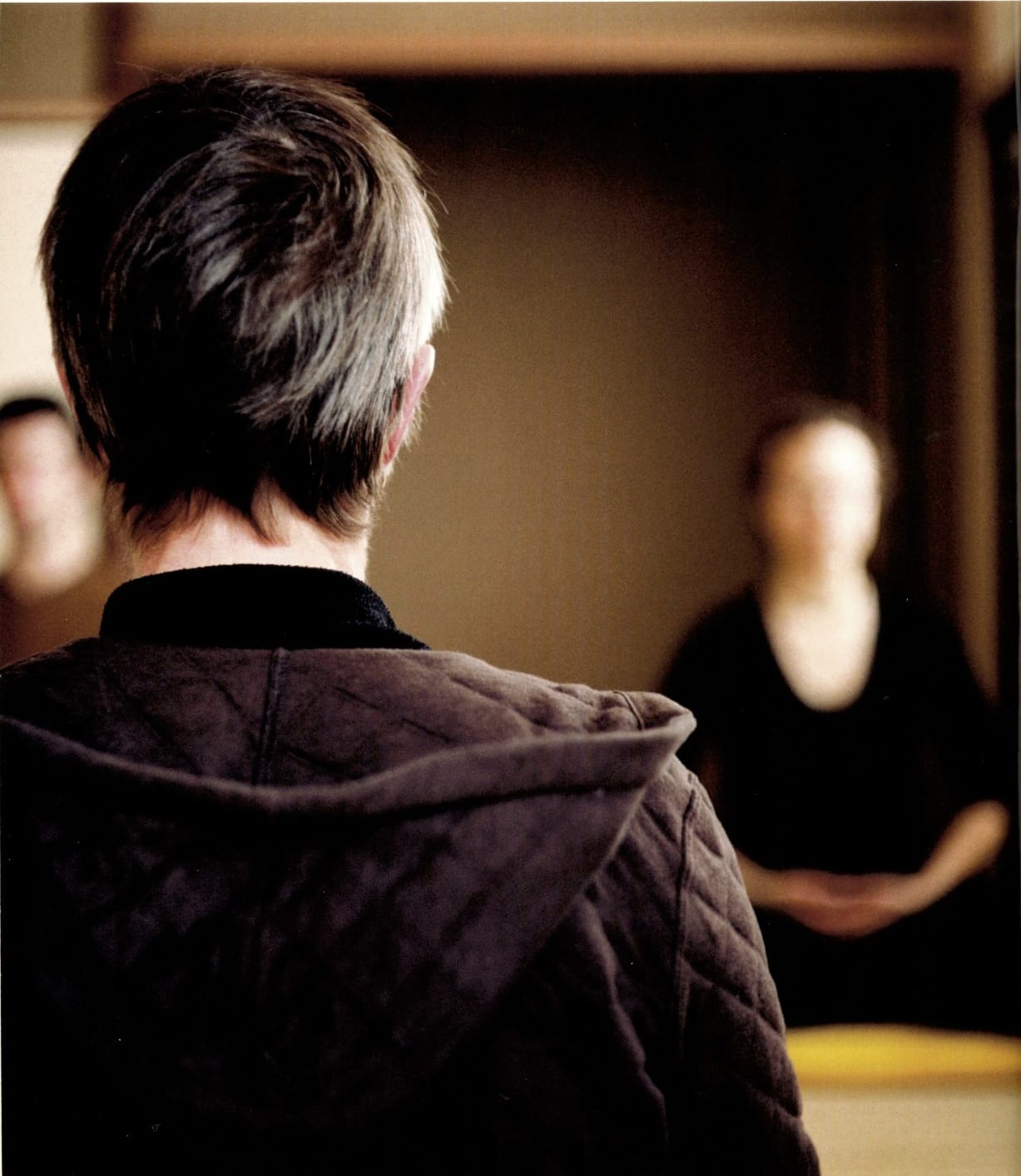
Photo by Liza Matthews.
HELPING OTHERS, AND YOURSELF, THROUGH TONGLEN MEDITATION
“If we ourselves have had even a glimmer of what egolessness feels like, of what awakening feels like, of what freedom feels like, then we want that for others too.”
Make your vow to help others real with this meditation teaching from Pema Chödrön.
TONGLEN: BAD IN, GOOD OUT
“Tonglen reverses the usual logic of avoiding suffering and seeking pleasure, and in the process we become liberated from a very ancient prison of selfishness.”
Pema Chödrön offers further explanation of this practice, which she says “dissolves the armor of self-protection we’ve tried so hard to create around ourselves.”
HOW MEDITATION HELPS IN DIFFICULT TIMES
“Meditation takes us just as we are, with our confusion and our sanity. This complete acceptance of ourselves as we are is a simple, direct relationship with our being.”
Pema Chödrön on four ways that meditation helps us deal with difficulty.
THE KEY TO KNOWING OURSELVES IS MEDITATION
“Although it is embarrassing and painful, it is very healing to stop hiding from yourself.”
Meditation practice awakens our trust that the wisdom and compassion that we need are already within us. It helps us to know ourselves: our rough parts and our smooth parts, our passion, aggression, ignorance and wisdom.
BUDDHIST MEDITATION IS RELAXING WITH THE TRUTH
“Why do we meditate? This is a question we’d be wise to ask. Why would we even bother to spend time alone with ourselves?”
It is only when we begin to relax with ourselves as we are that meditation becomes a transformative process, says Pema Chödrön. The pith instruction is, Stay. . . stay. . . just stay.
![]()
Pema’s teachings on suffering
TRANSFORMING THE HEART OF SUFFERING
“Use what seems like poison as medicine. Use your personal suffering as the path to compassion for all beings.”
In order to have compassion for others, we have to have compassion for ourselves, says Pema Chödrön. Tonglen can help us cultivate just that.
WHAT TO DO WHEN THE GOING GETS ROUGH
“We can sit with the intensity of the anger and let its energy humble us and make us more compassionate.”
Pema Chödrön on four ways to hold our minds steady and hearts open when facing difficult people or circumstances.
HOW TO MOVE FORWARD ONCE YOU’VE HIT BOTTOM
“What I’m saying is: fail. Then fail again.”
Pema Chödrön tells the story of when, having hit rock bottom, she asked her teacher what to do.
TURN YOUR THINKING UPSIDE DOWN
“It takes bravery to train in unconditional friendliness, it takes bravery to train in ‘suffering with,’ it takes bravery to stay with pain when it arises and not run or erect barriers.”
We base our lives on seeking happiness and avoiding suffering, but the best thing we can do for ourselves—and for the planet—is to turn this whole way of thinking upside down. Pema Chödrön shows us Buddhism’s radical side.
![]()
Pema’s teachings on love, compassion, and the self
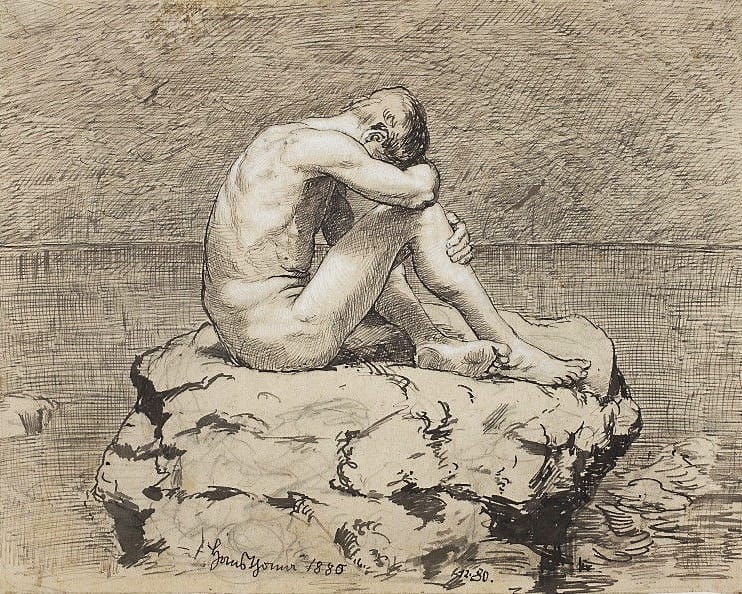
“Thoma Loneliness” by Hans Thoma – cyfrowe.mnw.art.pl.
SIX KINDS OF LONELINESS
“The middle way encourages us to awaken the bravery that exists in everyone without exception, including you and me.”
To be without a reference point is the ultimate loneliness. It is also called enlightenment.
A BODHICITTA PRACTICE
“There are two aspects of working with bodhicitta, both of equal importance: one is connecting with the flow of bodhicitta we already feel, and the other is being awake to where that flow is blocked.”
Pema Chödrön offers a method for generating love and compassion for all human beings.
TO KNOW YOURSELF IS TO FORGET YOURSELF
“You can only go into the unknown when you have made friends with yourself.”
According to Pema Chödrön, we might think that knowing ourselves is a very ego-centered thing, but by beginning to look clearly and honestly at ourselves, we begin to dissolve the walls that separate us from others.
REVERSING EGO’S LOGIC
“We shield our heart with an armor woven out of very old habits of pushing away pain and grasping at pleasure. We push away what’s unwanted and grasp what’s wanted.”
Pema Chödrön describes how to use tonglen to make friends with both the light and dark parts of yourself.
THE NATURAL WARMTH OF THE HEART
“When things fall apart and we can’t get the pieces back together, when we lose something dear to us, when the whole thing is just not working and we don’t know what to do, this is the time when the natural warmth of tenderness, the warmth of empathy and kindness, are just waiting to be uncovered.”
In the difficulties of your life, says Pema Chödrön, you will discover your natural love and warmth.






Leave A Comment
You must be logged in to post a comment.